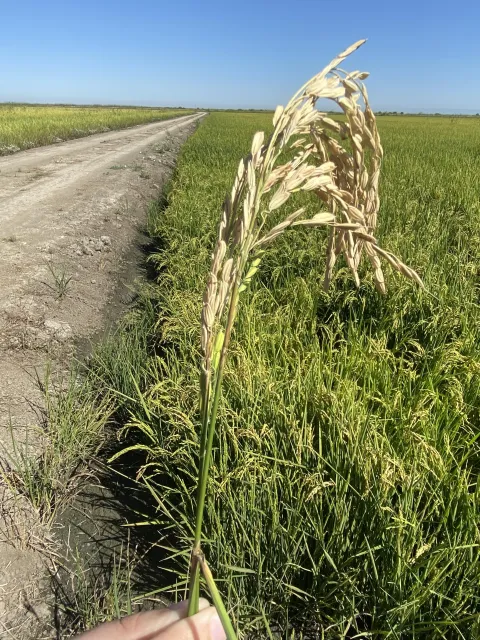Yesterday (Aug 28) at the Rice Experiment Station Field Day tour I mentioned that I had not seen any blast this year (only in one location where a little patch of M-105 was planted late on purpose to see if blast would develop).
Well, today I found neck blast in a commercial field in Glenn County and got a report of neck blast in another field in Butte County. In both locations, there were only a few affected panicles. It seems the blast appeared after the panicles were starting to fill.

About 10 days ago, the average daily hours of leaf wetness passed the 14 hours mark. In a field near the Colusa-Glenn border, the hours peaked on August 20, reaching 17 hours. Just as I saw last year, as the season progresses, hours of leaf wetness start to increase. Longer hours of leaf wetness increases the likehood of blast.

Are treatments needed at this time? I don’t think so. Most rice is already tipping. As panicles mature, they are more tolerant of blast.

